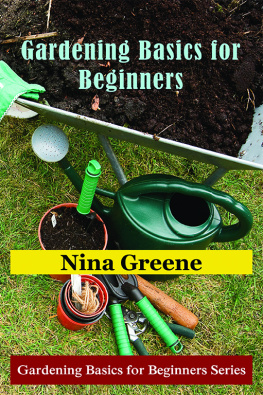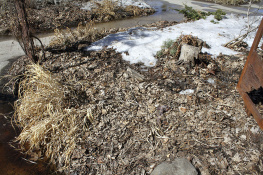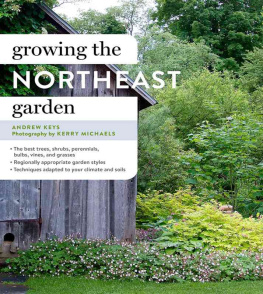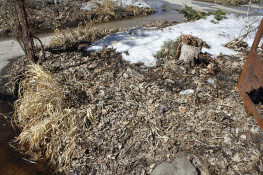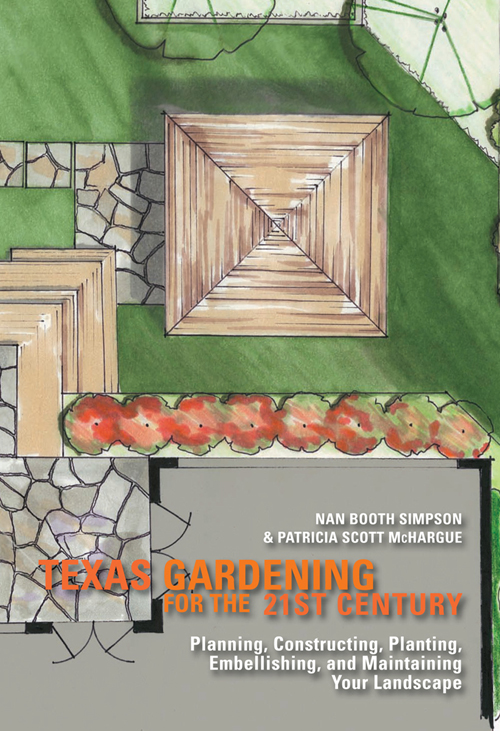

2365 Rice Blvd., Suite 202, Houston, Texas 77005
www.brightskypress.com
Copyright 2009 by Nan Booth Simpson and Patricia Scott McHargue;
Illustration Copyright 2009 by Bobbie Beal;
Architectural Drawings Copyright 2009 by Nan Booth Simpson
All rights reserved. No part of this book may be reproduced or transmitted in any form or by any means, electronic or mechanical, including photocopying, recording, or information storage and retrieval systems, without permission in writing from the copyright holder, except by a reviewer who may quote brief passages in a review.
ISBN 978-1-933979-68-7
10 9 8 7 6 5 4 3 2 1
Library of Congress information on file with publisher.
Book and cover design by Isabel Hernandez and Hina Hussein
Illustrations by Bobbie Beal
Architectural Drawings by Nan Booth Simpson
Cover illustration by Nan Booth Simpson
This book is dedicated to Malcolm Beck, who has been at the forefront of the organic movement in Texas: A farmer in the San Antonio area since 1957, he was considered faddish, even foolish for operating without pesticides or chemicals of any sort. He not only made his fruit and vegetable farm a success, but also founded Garden-Ville in 1980 to sell the compost he produced on the property. He influenced a number of people such as John Dromgoole, Howard Garrett and Bob Webster, who have, in turn, reached thousands of gardeners all over the state with their radio programs and publications. Becks books have been especially inspirational to me. Because we are both getting up in years, the opportunity to spend a couple of hours talking to him about sustainable gardening last year was something Ill always treasure.
Nan Booth Simpson, April 2009
Table of Contents
Garden Style
Inspiration and Information
Design
Construction
Soil Preparation
The Planting Plan
A Gardeners Garden
Finishing Touches
Ongoing Maintenance

Acknowledgements
Many people encouraged me as I wrote this book. I especially want to thank my coauthor, Patricia McHargue, who edited every word and offered innumerable suggestions about making it reader-friendly to a non-professional gardening audience. Ed Barger of Landscape Lighting Supply Co. in Richardson proofed the section on landscape lighting and explained new developments in his industry. The late Esper K. Chandler, an agronomist and soil scientist, who founded Texas Plant and Soil Lab, contributed his considerable expertise to the chapter on soil. Herb specialist Sara Holland provided me with a plant list for a comprehensive Texas culinary herb garden. Thanks also to Austin friends Maydelle and Sam Fason who shared their personal experiences with composting and waste management.



Introduction
A s a Texas-registered landscape architect, I have written this book in first person, sharing everything I have learned as a designer of residential gardens for over twenty-five years. Patricia McHargue, my coauthor of The Texas Garden Resource Book, served as editor and advisor for this book. We have been friends since childhood, and I designed Pats first real garden. Pat, an English major at The University of Texas, continues to correct my tendency toward colloquialisms and extravagantly long sentences. If she didnt completely understand something technical I wrote about soil or drainage, it was rewritten until the subject matter was clearly stated for a lay audience!
While most homeowners are eager to immediately leap into planting, this book counsels a much more thoughtful approach. Texas Gardening for the 21st Century is arranged in the order in which the work of a landscape architect progresses: designing, constructing, planting, and embellishing the garden with furnishings and art. The last chapter gives instruction for maintaining that perfect garden. The book (and garden design in general) begins with Finding Your Garden Style. The style should not only be appropriate for the region, but should also fit the architecture of the home and the personality and lifestyle of its owners.
, Sources of Inspiration and Information, I talk about some of our favorite public gardens (a complete guide to Texas botanical gardens, parks and nature preserves can be found at the beginning of each of the twelve chapters of The Texas Garden Resource Book). I have tried to offer enough advice to point gardeners in the right direction and enough horticultural information to assist them in asking the right questions. Rather than including a plant list, Ive provided a comprehensive list of Texas garden books on that subject, plus many other great sources of information.
provides instruction for soil preparation, the single most important factor in gardening.
planting a flat of zinnias and retiring for the summer. For some, gardening has become a competitive sport! For those who crave some rare bulb or a special agave that can only be found in the wild on a remote site in the Trans-Pecos, we have found at least one grower who maintains a fabulous online catalog.
Were fairly certain that the majority of people who will read this book truly enjoy their gardens, but have limited time to spend. They want to spend more of that time relaxing, so addresses ongoing maintenance, with labor-saving advice for pest management, water conservation and proper pruning.
Money-saving tips are sprinkled throughout the text to suggest economical ways for readers to improve their gardens. The text is laced with timesaving ideas, and I have carefully researched environmentally friendly products that will make every aspect of gardening easier and more rewarding. This book is meant to encourage gardeners, not to fuel the fires of guilt or send overachievers to a chiropractors office.
As advocates of sustainable gardening, we both fall into a middle ground. We confess to the occasional use of herbicide when confronted with poison ivy, but we are willing to accept some serendipitous surprises the birds bring in. And, although we advise against it, we are both guilty of impulse buying. (You wouldnt have believed how many plants we piled into the back of my car as we returned to our homes after weeklong research trips!) But, once you have carefully selected a good spot for some gorgeous goodie you couldnt live without and have given the plant reasonable care, dont hesitate to discard it if it doesnt thrive in your garden. It just didnt belong there. Part of the fun of gardening is experimentation. Enjoy!
Follow the design process for a Texas Hill Country garden on pages 55, 57, 59, 66, 122, 123, and 161.


